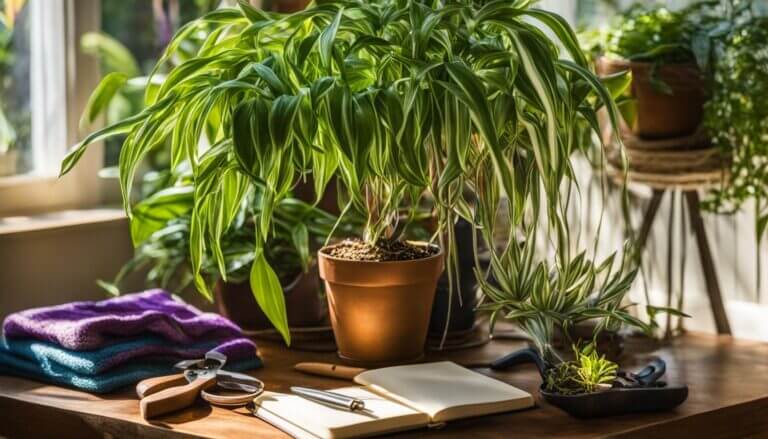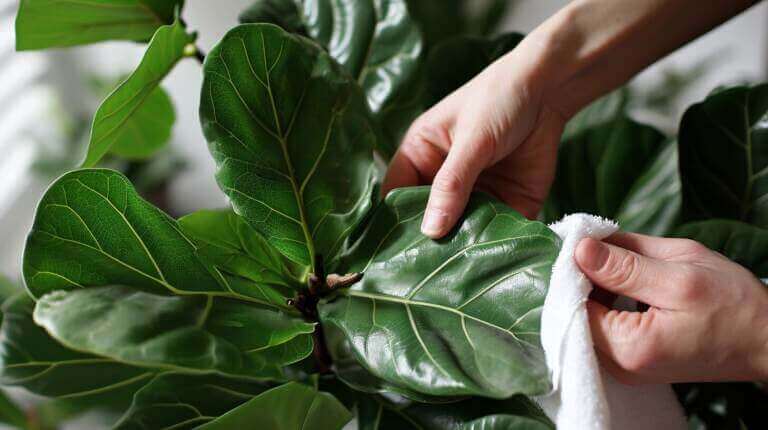Dumb Cane(Dieffenbachia) vs Chinese Evergreen Plant(Aglaonema): Spotting the Key Differences
Dieffenbachia and Aglaonema are both popular houseplants known for their unique characteristics and attractive foliage. While they may appear similar at first glance, there are several key differences that can help distinguish between the two. In this article, I will explore these differences and discuss the various aspects of dieffenbachia and aglaonema, including their size, leaf color, growth rate, stem structure, and more. By the end, you’ll be able to confidently identify and care for these two distinctive indoor plants.
Key Takeaways:
- Detailed exploration of the differences between Dieffenbachia and Aglaonema.
- Understanding the size and leaf color variations in Dieffenbachia and Aglaonema.
- Insight into the growth rate and stem structure of these two houseplants.
- Care requirements and precautions for Dieffenbachia and Aglaonema.
- Knowledge of the toxicity levels in both plants.
Size and Leaf Color
When it comes to size and leaf color, Dieffenbachia and Aglaonema showcase noticeable differences. Dieffenbachia plants can reach heights of up to 3 feet, while Aglaonema typically grows to about 2-3 feet in height. The leaves of Dieffenbachia are large and oval-shaped, adorned with striking splotches of light yellow or cream color. On the other hand, Aglaonema leaves are smaller and more elongated, with delicate silver veins running throughout. One intriguing aspect is that Aglaonema exhibits a wider range of leaf color variations, including shades of green, pink, and even red, adding a vibrant touch to any indoor space. In contrast, Dieffenbachia leaves tend to have brighter colors near the center, gradually transitioning to a darker green around the borders, creating an interesting contrast.
To provide a clear visual representation of the differences in size and leaf color, the following table highlights the key distinctions between Dieffenbachia and Aglaonema:
| Characteristic | Dieffenbachia | Aglaonema |
|---|---|---|
| Size | Up to 3 feet tall | About 2-3 feet tall |
| Leaf Shape | Large and oval-shaped | Smaller and elongated |
| Leaf Color | Yellow or cream splotches | Varies, including green, pink, and red |
As you can see, this table provides a handy reference for distinguishing between Dieffenbachia and Aglaonema based on their size and leaf color.
Understanding these differences allows for easier identification and selection when it comes to incorporating these unique plants into your indoor greenery collection.
Growth Rate and Stem Structure
When it comes to growth rate and stem structure, Dieffenbachia and Aglaonema exhibit distinct characteristics. Dieffenbachia is known for its rapid growth, with an average growth rate of approximately 15 inches per year. Its stem is long and cane-like, resembling a tree or bamboo. As Dieffenbachia matures, its stem may lean over, adding to its unique appearance.
On the other hand, Aglaonema has a slower growth rate compared to Dieffenbachia. Although it still grows steadily, it tends to be more compact and bush-like in shape. Aglaonema’s stem is shorter and fleshy, remaining upright as the plant matures. This compact growth habit makes Aglaonema a popular choice for smaller spaces or as a tabletop plant.
Both Dieffenbachia and Aglaonema have distinctive stem structures that contribute to their overall appearance. While Dieffenbachia’s tall and slender stem adds elegance and height to its presence, Aglaonema’s compact and sturdy stem gives it a more compact and bushy look. Understanding the growth rates and stem structures of these plants can help you choose the right one for your indoor space.
Comparison of Growth Rates and Stem Structures
| Growth Rate | Stem Structure | |
|---|---|---|
| Dieffenbachia | Rapid growth rate of approximately 15 inches per year | Tall, cane-like stem resembling a tree or bamboo |
| Aglaonema | Slower growth rate compared to Dieffenbachia | Compact and bush-like stem |
Care Requirements and Toxicity
When it comes to caring for your Dieffenbachia and Aglaonema plants, the good news is that their requirements are quite similar. Both plants thrive in bright, indirect light, so placing them near a window with filtered sunlight is ideal. As for soil, a well-drained potting mix will work well for both species.
Watering is an important aspect of their care, and it’s best to let the top inch of soil dry out before watering again. Overwatering can lead to root rot, so it’s essential to strike a balance and avoid soggy soil.
While both Dieffenbachia and Aglaonema are fairly low-maintenance, it’s crucial to be aware of their toxicity. Dieffenbachia, in particular, contains oxalate crystals that can cause severe irritation if ingested. Aglaonema, on the other hand, has milder toxicity. Therefore, it’s essential to keep these plants out of reach of children and pets and educate yourself about the potential risks.
With proper care and attention, your Dieffenbachia and Aglaonema plants can thrive and bring beauty to your indoor space. Just remember to follow their care guidelines and take necessary precautions to ensure the well-being of your household.
FAQ
Are dieffenbachia and aglaonema the same plant?
No, dieffenbachia and aglaonema are two different plant species.
What is the difference between Aglaonema and Dieffenbachia?
Both Aglaonema and Dieffenbachia are popular houseplants belonging to the Araceae family. The key difference between the two lies in their foliage. Dieffenbachia, also known as Dumb Cane, typically has variegated leaves with a mix of green and white. On the other hand, Chinese Evergreen (Aglaonema) has dark green leaves often with silver variegation.
How often should I water a Chinese Evergreen?
Chinese Evergreen (Aglaonema) prefers the soil to dry out completely between waterings. Overwatering can lead to root rot. The frequency of watering may vary based on the growing season and humidity levels.
What are some common problems with Chinese Evergreen?
Some common problems with Chinese Evergreen include yellowing leaves due to overwatering, brown leaf tips due to low humidity, and slow growth due to lack of fertilizer or direct sunlight.
What are the different types of Dieffenbachia?
There are several varieties of Dieffenbachia, each with unique leaf patterns. Some popular types include Dieffenbachia Compacta, which has compact growth, and Dieffenbachia Camille, known for its beautiful variegated foliage.
What are the key differences between Dieffenbachia and Chinese Evergreen?
The key differences between Dieffenbachia and Chinese Evergreen lie in their care requirements and appearance. Dieffenbachia prefers brighter light and more frequent watering compared to Chinese Evergreen. In terms of appearance, Dieffenbachia has broader leaves with a mix of green and white, while Chinese Evergreen has narrower, dark green leaves often with silver variegation.
What are some Aglaonema species and how do I care for them?
There are numerous species and cultivars of Aglaonema, each with unique leaf patterns. Some popular ones include Aglaonema Maria and Aglaonema Commutatum. Care for Aglaonema involves placing the plant in low to medium light, watering when the top inch of soil dries out, and maintaining humidity levels.






